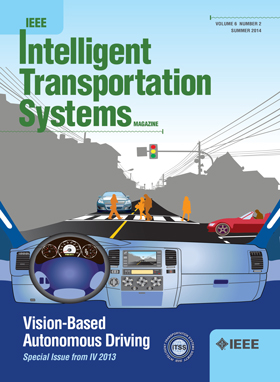GEOcc: Geometrically Enhanced 3D Occupancy Network With Implicit-Explicit Depth Fusion and Contextual Self-Supervision
IF 7.9
1区 工程技术
Q1 ENGINEERING, CIVIL
IEEE Transactions on Intelligent Transportation Systems
Pub Date : 2025-03-10
DOI:10.1109/TITS.2025.3539627
引用次数: 0
Abstract
3D occupancy perception holds a pivotal role in recent vision-centric autonomous driving systems by converting surround-view images into integrated geometric and semantic representations within dense 3D grids. Nevertheless, current models still encounter two main challenges: modeling depth accurately in the 2D-3D view transformation stage, and overcoming the lack of generalizability issues due to sparse LiDAR supervision. To address these issues, this paper presents GEOcc, a Geometric-Enhanced Occupancy network tailored for vision-only surround-view perception. Our approach is three-fold: 1) Integration of explicit lift-based depth prediction and implicit projection-based transformers for depth modeling, enhancing the density and robustness of view transformation. 2) Utilization of mask-based encoder-decoder architecture for fine-grained semantic predictions; 3) Adoption of context-aware self-training loss functions in the pertaining stage to complement LiDAR supervision, involving the re-rendering of 2D depth maps from 3D occupancy features and leveraging image reconstruction loss to obtain denser depth supervision besides sparse LiDAR ground-truths. Our approach achieves State-of-the-Art performance on the Occ3D-nuScenes dataset with the least image resolution needed and the most weightless image backbone compared with current models, marking an improvement of 3.3% due to our proposed contributions. Comprehensive experimentation also demonstrates the consistent superiority of our method over baselines and alternative approaches. Our code is available at求助全文
约1分钟内获得全文
求助全文
来源期刊

IEEE Transactions on Intelligent Transportation Systems
工程技术-工程:电子与电气
CiteScore
14.80
自引率
12.90%
发文量
1872
审稿时长
7.5 months
期刊介绍:
The theoretical, experimental and operational aspects of electrical and electronics engineering and information technologies as applied to Intelligent Transportation Systems (ITS). Intelligent Transportation Systems are defined as those systems utilizing synergistic technologies and systems engineering concepts to develop and improve transportation systems of all kinds. The scope of this interdisciplinary activity includes the promotion, consolidation and coordination of ITS technical activities among IEEE entities, and providing a focus for cooperative activities, both internally and externally.
 求助内容:
求助内容: 应助结果提醒方式:
应助结果提醒方式:


